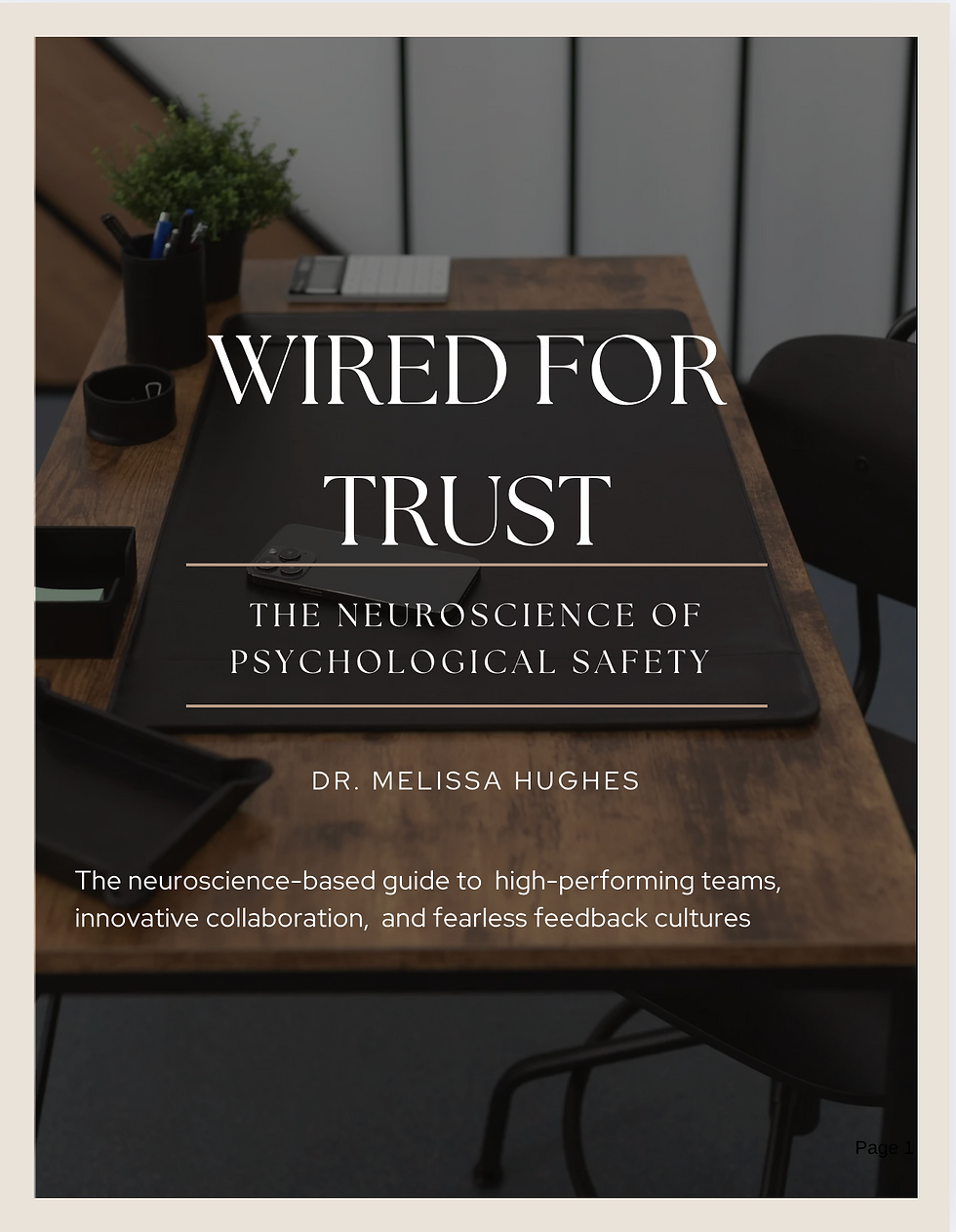Psychological Safety at Work: The Key to Team Success
- Melissa Hughes

- Aug 15
- 3 min read
Updated: Oct 14
Creating a thriving team environment is more than just meeting deadlines and hitting targets. It requires a foundation where every member feels secure, valued, and free to express themselves without fear of judgment or punishment. This foundation is known as workplace emotional safety. When teams experience this kind of safety, they unlock creativity, collaboration, and resilience that drive success.
Understanding the importance of workplace emotional safety can transform how teams operate. It encourages open communication, reduces stress, and fosters a culture where innovation flourishes. This article explores why this concept is essential, how it impacts team dynamics, and practical ways to cultivate it.
Emotional safety creates an environment where employees feel comfortable sharing ideas, admitting mistakes, and asking questions. It is crucial because it directly influences team morale and productivity. When people feel emotionally safe, they are more engaged and willing to contribute their best work.
For example, in a team meeting, an employee who feels emotionally safe will speak up about a potential problem or suggest a new approach without hesitation. This openness can prevent costly errors and spark innovation. Conversely, in a team lacking this safety, members may stay silent, leading to missed opportunities and unresolved conflicts.
To build workplace emotional safety, leaders should:
Encourage respectful listening and avoid interrupting.
Recognize and appreciate contributions openly.
Address conflicts promptly and constructively.
Promote transparency in decision-making.
These actions create a supportive atmosphere where everyone feels their voice matters.
How Workplace Emotional Safety Drives Team Performance
Teams that prioritize emotional safety experience higher levels of trust and cooperation. This trust reduces the fear of failure, allowing team members to take risks and experiment with new ideas. It also improves problem-solving as diverse perspectives are shared freely.
Research shows that teams with high emotional safety have:
Increased creativity and innovation.
Better conflict resolution skills.
Higher employee retention rates.
Enhanced overall job satisfaction.
For instance, a software development team that feels safe can openly discuss bugs and challenges without blame. This transparency accelerates problem-solving and leads to better product quality.
Leaders can foster this environment by:
Modeling vulnerability and admitting their own mistakes.
Creating regular opportunities for feedback and reflection.
Celebrating learning moments, not just successes.
By embedding these practices, teams become more resilient and adaptive.
What are the 4 types of psychological safety?
Understanding the different dimensions of psychological safety helps in creating a comprehensive approach to workplace emotional safety. The four types include:
Inclusion Safety - Feeling accepted and included as a valued member of the team.
Learner Safety - Feeling safe to ask questions, experiment, and make mistakes without fear.
Contributor Safety - Feeling safe to contribute ideas and opinions confidently.
Challenger Safety - Feeling safe to challenge the status quo and offer constructive criticism.
Each type plays a vital role in building a culture where team members thrive. For example, inclusion safety ensures no one feels isolated, while challenger safety encourages innovation by welcoming diverse viewpoints.
To assess and improve these areas, teams can:
Conduct anonymous surveys to gauge feelings of safety.
Hold workshops focused on communication and empathy.
Establish clear norms that support respectful disagreement.
Addressing all four types creates a balanced and supportive team environment.

Practical Steps to Enhance Workplace Emotional Safety
Building workplace emotional safety is an ongoing process that requires intentional effort. Here are actionable recommendations to get started:
Set Clear Expectations: Define what respectful communication looks like and enforce it consistently.
Encourage Open Dialogue: Use regular check-ins and team retrospectives to invite honest feedback.
Provide Psychological Safety Training: Educate team members on the importance of emotional safety and how to contribute to it.
Recognize and Address Toxic Behaviors: Quickly intervene when behaviors undermine safety, such as bullying or exclusion.
Promote Empathy: Encourage team members to listen actively and consider others’ perspectives.
For example, a manager might start meetings by inviting everyone to share one success and one challenge. This practice normalizes vulnerability and builds trust over time.
By embedding these steps into daily routines, teams can create a culture where emotional safety is the norm, not the exception.
For more insights on how to cultivate psychological safety in your organization, check out
Wired for Trust: The Neuroscience of Psychological Safety. In this illustrated 52-page science-backed guide, Dr. Hughes takes you inside the brain to reveal how psychological safety fuels innovation, engagement, and team success. Blending neuroscience, leadership psychology, and relatable stories from the workplace, this eBook explores how trust transforms teams—and what happens when it’s missing.






Comments